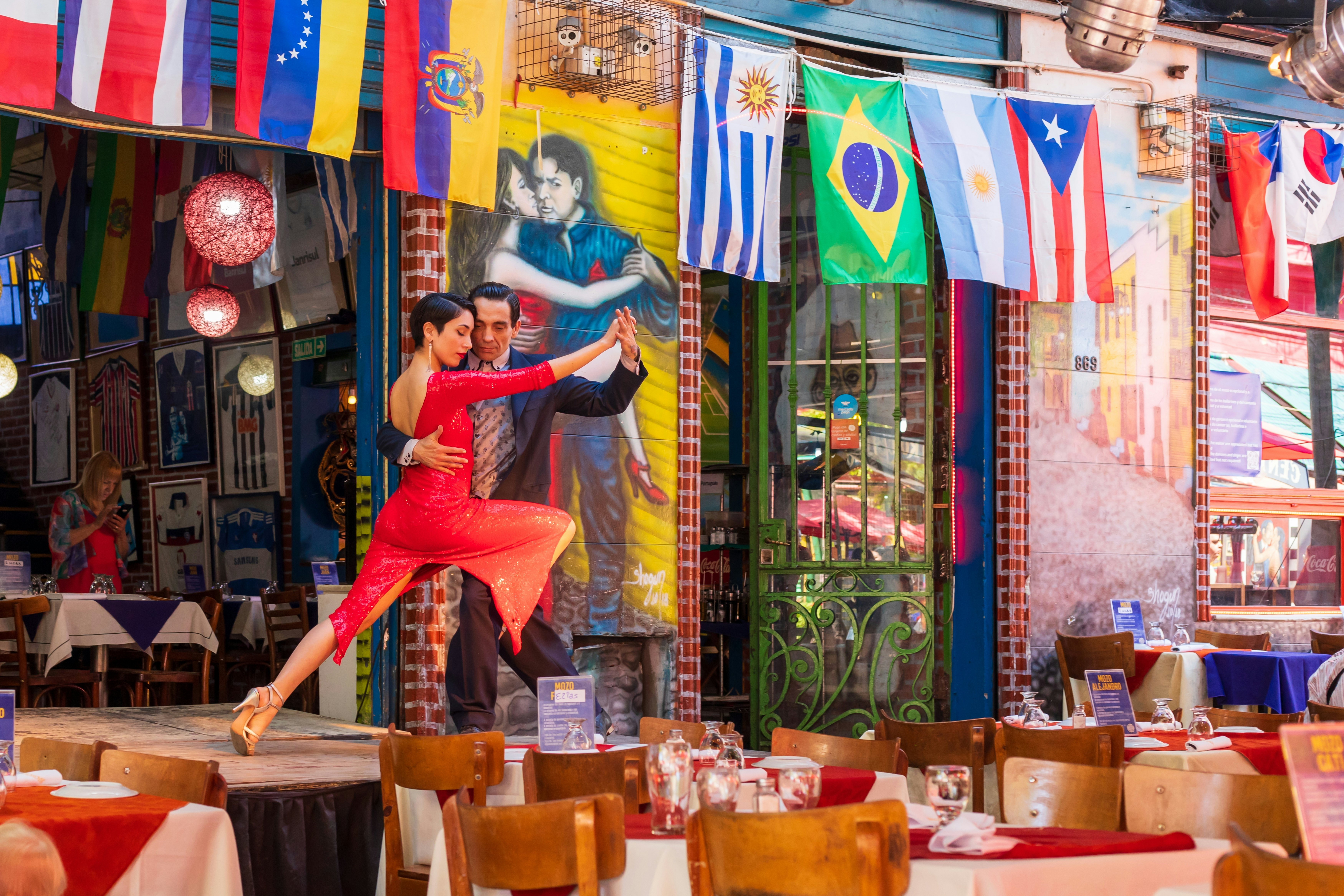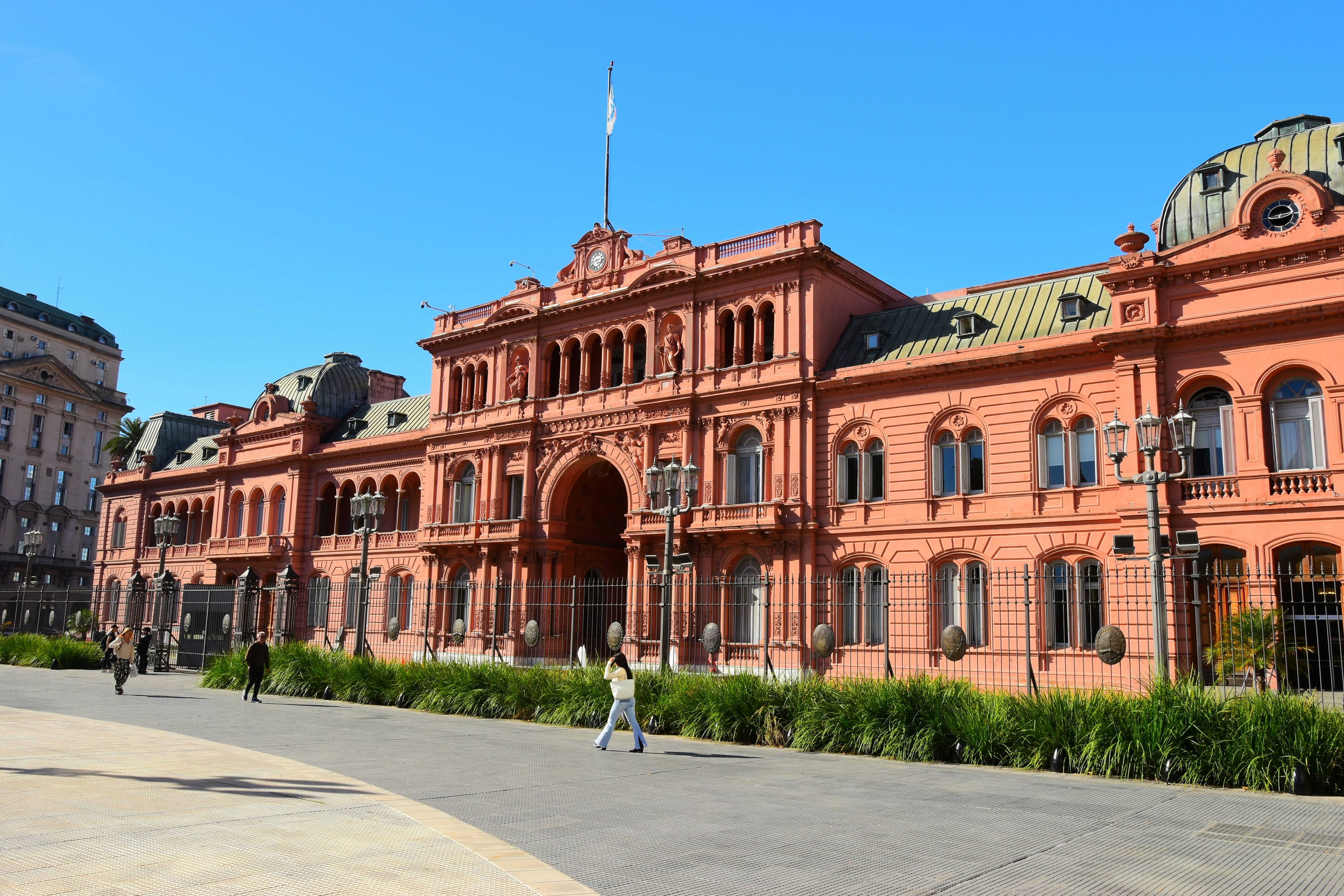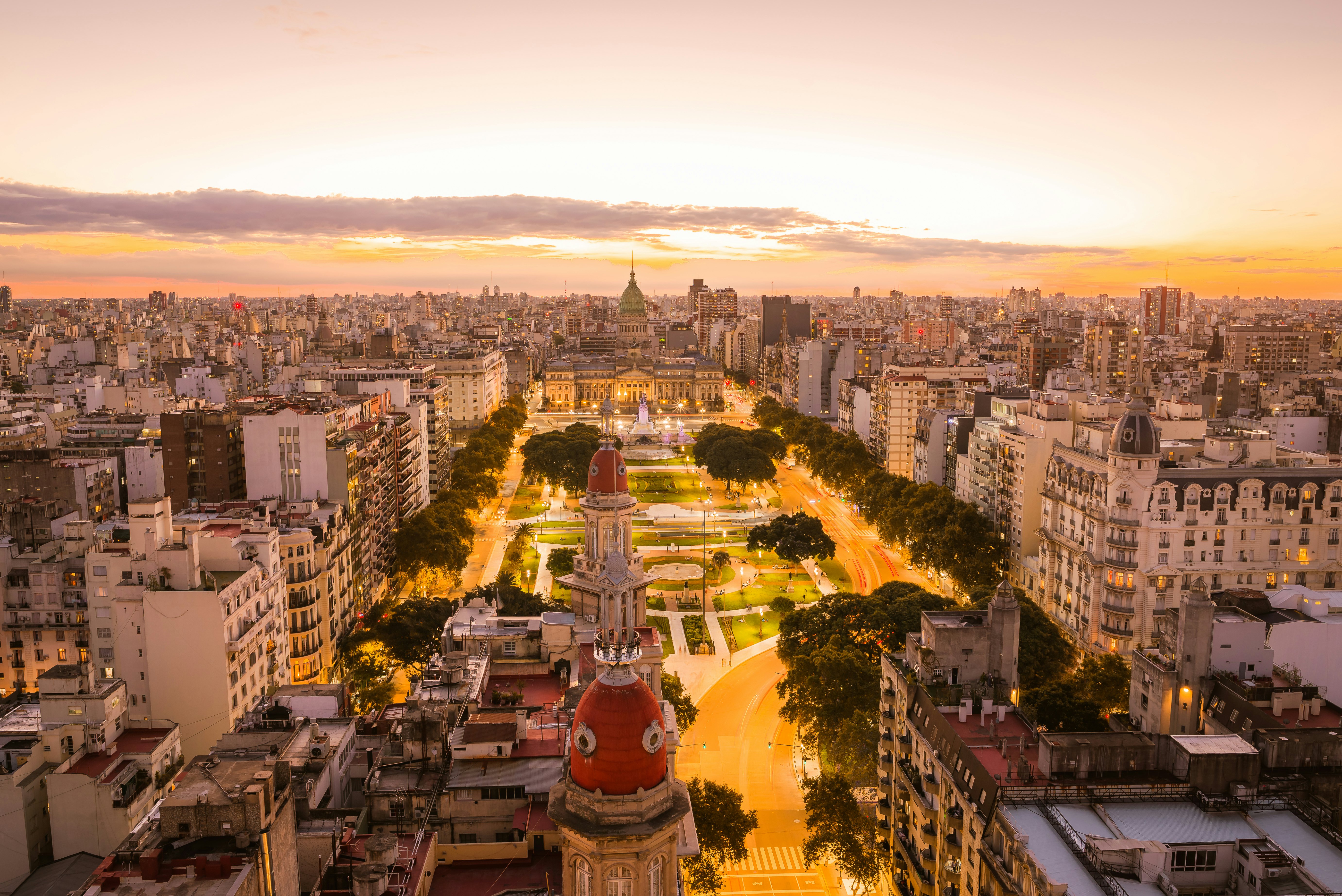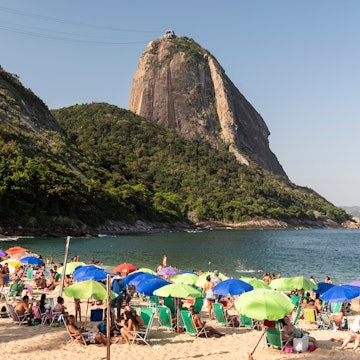

Come to Buenos Aires for architectural and natural beauty. Svetype26/Shutterstock
Buenos Aires is an enormous and thrilling city, and one that is particularly accessible for budget-conscious travelers, thanks to cheap food and plenty of free activities.
Outdoor markets, free museums, glorious architecture and delightful parks are only the beginning of what you can get up to without breaking out your wallet.
Whether taking in the city’s unique neighborhoods on foot or on a city bike (free on weekdays), you need not spend a dime to experience Buenos Aires to the fullest.

1. Breathe the tango air in Caminito
Caminito, in the port neighborhood of La Boca, is a historic jewel. In the area's conventillos or tenements, immigrants from Italy, Spain and Eastern Europe mingled with Afro-Argentines and Indigenous people to create tango, the world-famous music style and dance that originated in these parts in the early 20th century.
The colorful houses and murals by Benito Quinquela Martín, a native of the neighborhood, are a distinctive staple of La Boca.
If you head into the buildings and look closely (the entrances can be hard to locate), you'll find a number of free or cheap museums that recreate how the recent arrivals lived.
You can’t miss the Benito Quinquela Martín museum and the Conventillo de 1881, which are both completely free.
Local tip: Don’t forget to stop by the bandoneonistas playing some of the world’s best tango, and leave a couple pesos if you can.
2. Take in some contemporary art at Fundación Proa and the Usina del Arte
Right by Caminito, Fundación Proa is one of the best art museums in Buenos Aires, featuring world-class contemporary visual art and design from Argentina and the world, and it’s completely free on Wednesdays.
The avant-garde museum is set right by the river, on the edge of Caminito, in a fully renovated 19th-century house in the traditional Argentine style. Head up to the roof for a unique view of the city from its Southern tip.
The Usina del Arte is also a contemporary arts and music space housed in a grand former electricity plant done in an elaborate exposed brick style, with a plethora of family-friendly and cutting edge music, dance and art.
Plus it's just a few blocks away from Caminito in La Boca. Check the venue's Instagram page for the latest programming.

3. Visit the Chacarita Cemetery
The Chacarita Cemetery was built in the midst of a yellow fever epidemic in 1871 behind a monastery.
It has since become the main burial ground for the city’s denizens, and many icons –from tango superstar Carlos Gardel to international rock star Gustavo Cerati – have their final resting place within its confines.
There are many sub-cemeteries, each with their own particular character.
The Sixth Pantheon in particular is a brutalist architectural masterpiece of rigorous straight lines and textured concrete, built between 1949 and 1966 by the Ítala Fulvia Villa and commissioned, among others, by the legendary Argentine architect Clorindo Testa, who also designed Buenos Aires’ iconic National Library (another worthwhile – and gratis – stop in Buenos Aires).
4. Hop aboard an authentic porteño tram
Though now mostly a thing of the past, Buenos Aires once boasted one of the largest tram networks in the world until it was removed in the 1960s. You can still see the tracks on some streets throughout the city.
In the gorgeous, traditional neighborhood of Caballito, neighbors banded together to revive the trams, and on weekends and holidays, you can hop aboard for free to get a glimpse of an older Buenos Aires.
Times: Saturdays and holidays from 3pm to 6pm. Sundays from 10am to 1pm and 3pm to 6pm. Rides are around 20 minutes long and leave every 25 minutes.
5. Dive into the past at the Chacarita Flea Market
Located in a chic area full of cafes, bodegones (Argentine diners) and traditional gelaterias, the flea market in Chacarita has furniture, records and all kinds of decor on display (and on sale).
It’s a time capsule towards life in the Argentina of yesteryear. Walking around is free and you might uncover some real legends of Argentine history, from custom-made furniture by world famous designers to one-of-one portraits lost amid the crates at an estate sale.
It’s the city’s past at its most bare. The building itself is also an icon, covered top-to-bottom in street art.
6. Learn about Argentina’s folklore at the Feria de Mataderos
Located in the neighborhood where beef was traditionally slaughtered and quartered, the Feria de Mataderos has everything from horseback riding lessons with real life gauchos to folk musicians and dancers as well as artisans.
Enjoy the fresh air and experience the best of Argentina’s folk culture either entirely for free or at a very reasonable price.
Local tip: Don’t miss the food – it’s some of the best and most authentic asado you’ll find in the city.

7. Trawl for trinkets at the San Telmo Fair
All things strange and indescribable, from relics to artisan goods, can be found in this open air, Sundays-only market that stretches along the San Telmo Square and down Defensa street to the Plaza de Mayo. It’s open from 11am to 7pm, though not if it rains.
You’ll find street artists and buskers in an area full of 19th-century great houses and French balconies near the traditional center of the city.
Local tip: Stop by the San Telmo market nearby for some delicious food.

8. People watch at Casa Rosada
Argentina’s iconic seat of government, allegedly painted pink to mix the colors of the country’s two leading political parties at the time (red and white), has free tours available in multiple languages.
You’ll get some explanation of the history, a look at the most important parts of the building, and even a moment to look out from its iconic balcony, from which presidents like Juan Domingo Perón (and his wife, Eva Perón) have looked out onto their people as they shaped the country’s history.
There’s also a wonderfully curated art museum, which is similarly free to access and houses true landmarks of Argentine art.
Local tip: The Madres de Plaza de Mayo (an organization of mothers and family members of people disappeared by Argentina’s last dictatorship, which lasted from 1976 to 1983) march around the central obelisk of the Plaza de Mayo every Thursday at 3:30pm, in an uninterrupted protest. They walk around the obelisk because the military officials, trying to dissuade the protest, made standing still in the square illegal. Attending a protest and marching is a once in a lifetime experience.
9. Dive into Argentina’s art history at the Bellas Artes Museum
Housed in a former waterworks building, the Bellas Artes Museum is a jewel of Argentine and world art, with paintings by local icons like Prilidiano Pueyrredón or Cándido López and pieces by Picasso, De Chirico and Renoir, with temporary exhibits showcasing the best of Argentine art past and present.
Local tip: Though there is a spot for voluntary donations to support the museum’s work, entrance to the main collection and the many short-term exhibitions is free of charge (however, some temporary exhibitions are not – check their website for details).
10. Enjoy street culture at the Parque Rivadavia Fair
Another of Buenos Aires’ remarkable Sunday fairs, Parque Rivadavia’s fair has become an iconic space for old books, stamp and coin collectors, as well as more typical fare from typical Argentine street food like choripán – a chorizo and bread sandwich – to cheap clothes.
Parque Rivadavia is also a hot spot for street rapping competitions and street performers, and you’ll probably encounter someone dancing tango or playing Argentine rock when you’re there.
Local tip: Get there in the morning for peak activity and more plentiful offers. The fair starts closing around 2 or 3pm.

11. Bask in the Dantesque at the Palacio Barolo
Built by Italian architect Mario Palanti at the behest of entrepreneur Luigi Barolo, this esoteric jewel inaugurated in 1923 – with a near-identical counterpart in Montevideo called the Palacio Salvo – is a monument of complexity.
The structure is brimming with references to Dante Alighieri’s "Divine Comedy." Occupants travel up its near 100m spire, which was conceived to imitate the tripartite structure of the world: hell, purgatory and paradise.
Local tip: The palacio is free to enter and walk around. You might get more of the architectural details with a guided visit, but it’s by no means necessary.
12. Browse late-night bookstores on Corrientes Avenue
Corrientes Avenue was the glamorous centerpoint of midcentury Buenos Aires, lined with theaters and cinemas, classic pizzerias and bars, leading down to the Obelisco monument at the heart of the city.
Even more legendary than the pizzas are the bookstores and record stores new and used alike, which at one point were open all night but now close around 2am. Browse their well-stocked, poorly-catalogued shelves and you might spot a forgotten gem or a long-lost classic.
You needn’t spend a dime, though the prices in Corrientes bookstores are famously customer-friendly and the employees encyclopedically knowledgeable.
Local tip: Look down when walking – Buenos Aires has its own Walk of Fame, and the stars line the Corrientes sidewalks.
















